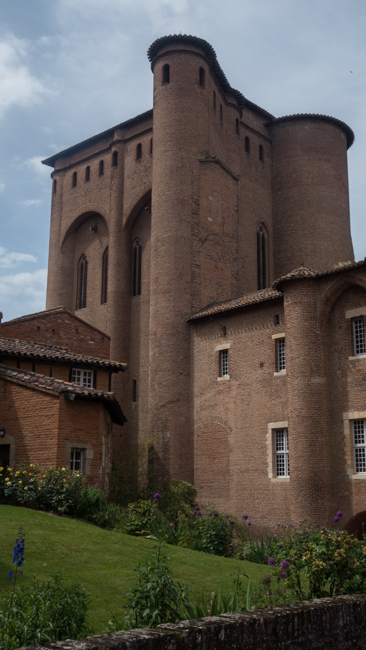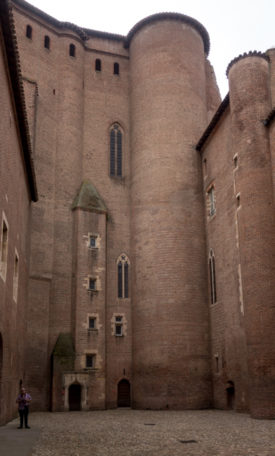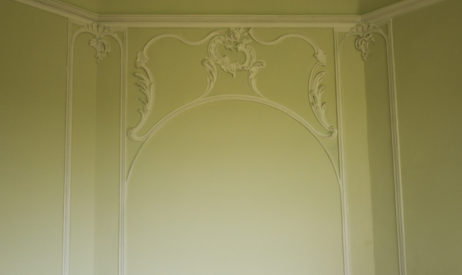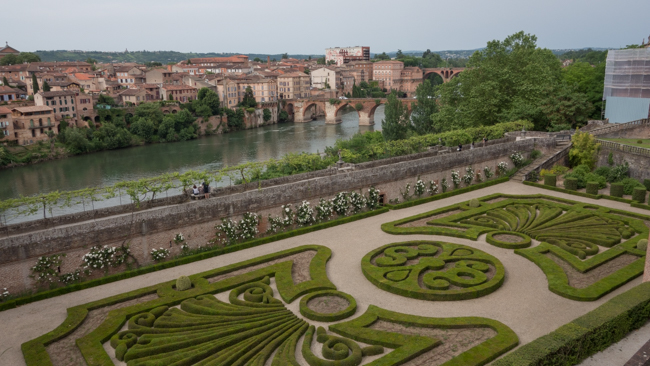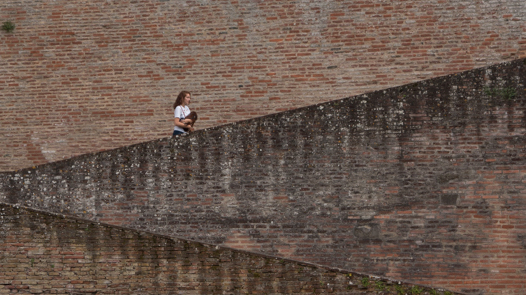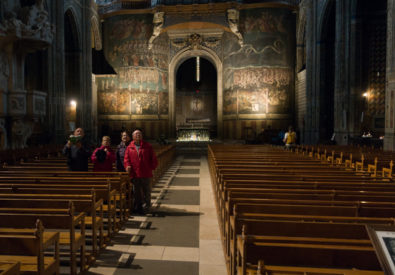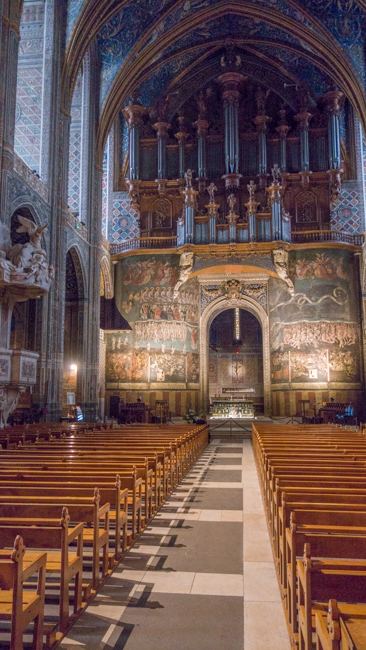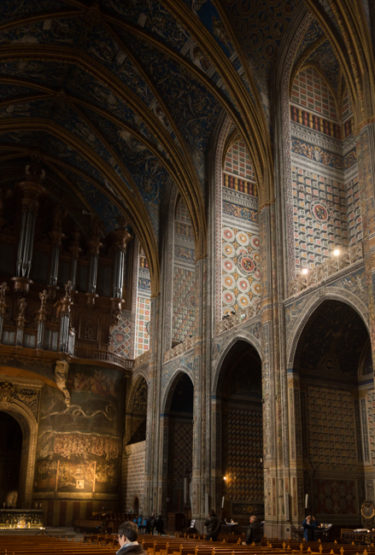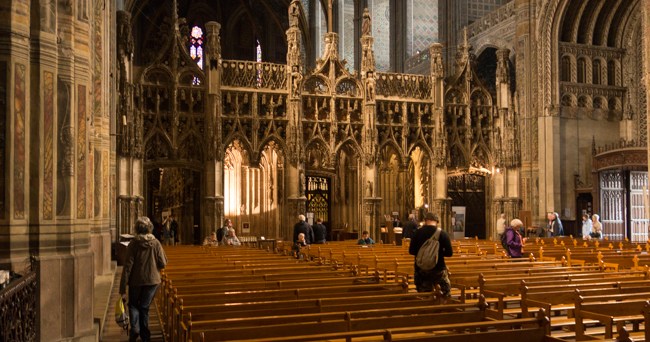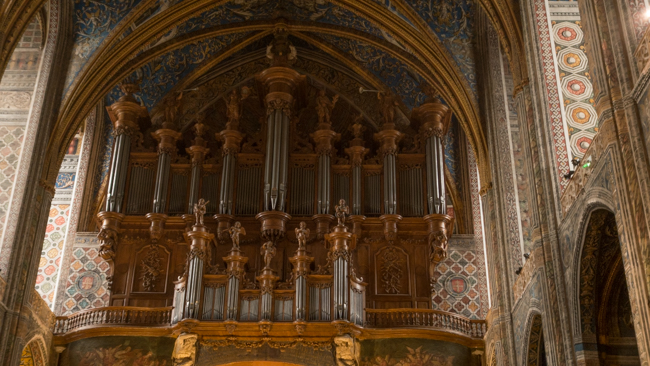After three days in Toulouse, we hit the road again. We spent a night in Albi, which has two really amazing sights: a museum and a cathedral. I know you’re saying, “Another cathedral!?!” Yep, and one different than any we’ve ever seen.
Musée Toulouse-Lautrec
This museum is worth a visit if for no other reason than to see the building. Toulouse-Lautrec, despite his name, was born in Albi in 1864. Once he’d made his way to Paris, he found his niche painting scenes from Paris night-life. From this background came the first posters advertising performers; Toulouse-Lautrec created this genre; his posters are still among the best, and certainly are the best from the belle-epoque of Paris. To honor him and his works, Albi created this museum, in the house of the Bishop of Albi.
A little background that explains why the Bishop’s palace…I mean, house, was a fortress: up to the 1200s, this whole area was Protestant. In 1209, Pope Innocent decreed that it would no longer be Protestant and sent an army to conquer it. In 1229, the Protestants were defeated, with help from the French king. Defeated or not, they remained Protestant, and they hated the Bishop. So he built this fortress-palace to protect himself from the Protestants. As you’ll see, the Cathedral of Albi also reflects the fortress mentality that the Catholic church had to adopt here.
Anyway, the Museé Toulouse-Lautrec:
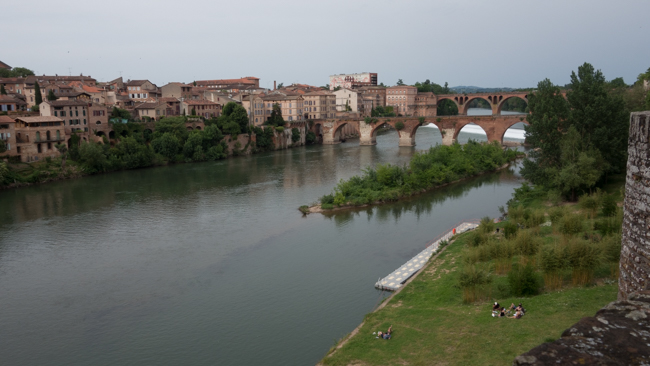 |
||
For more on Toulouse-Lautrec’s paintings and posters: https://www.google.fr/search?rlz=1C5CHFA_enUS750US750&q=toulouse+lautrec+oeuvres
La Cathedral Sainte-Cécile d’Albi
Following my story above, you’ll understand the appearance of this Cathedral. It’s a fortress, designed to show the power of the Catholic church to all the local folks who were still Protestants in secret. Another difference between this cathedral and so many others we’ve seen is that this is built in the local brick, and is of the “southern Gothic” architecture; that means thick walls.

But it’s the interior that knocks your socks off! There is not one square inch of wall that is undecorated.
That was the extent of our visit to Albi. We saw the two necessary sights, but guidebooks relate that the town of Albi is also a beautiful and historic and interesting place to visit. Our schedule prevented that, but I suspect we’ll be back sometime in the future to explore Albi more.

